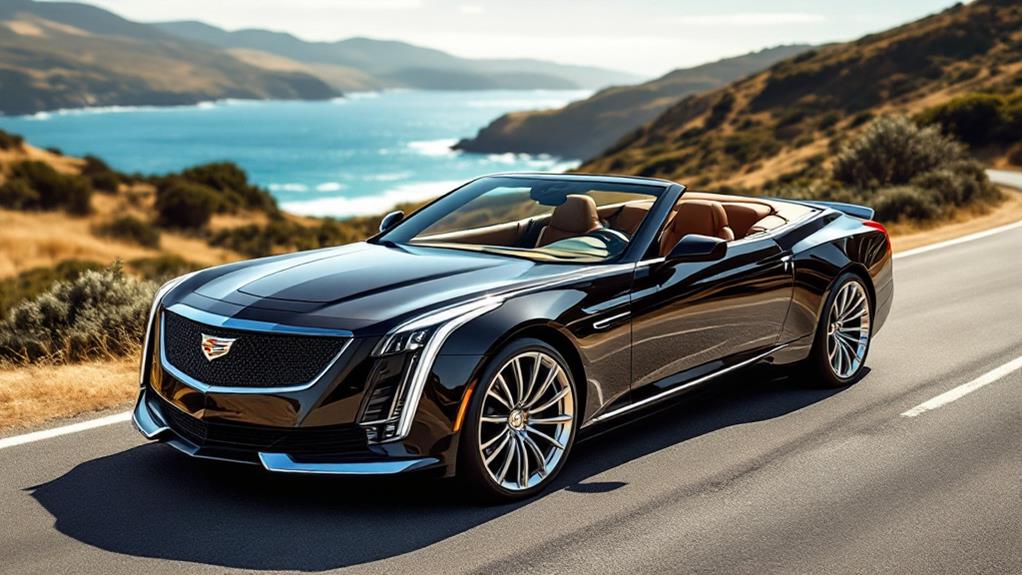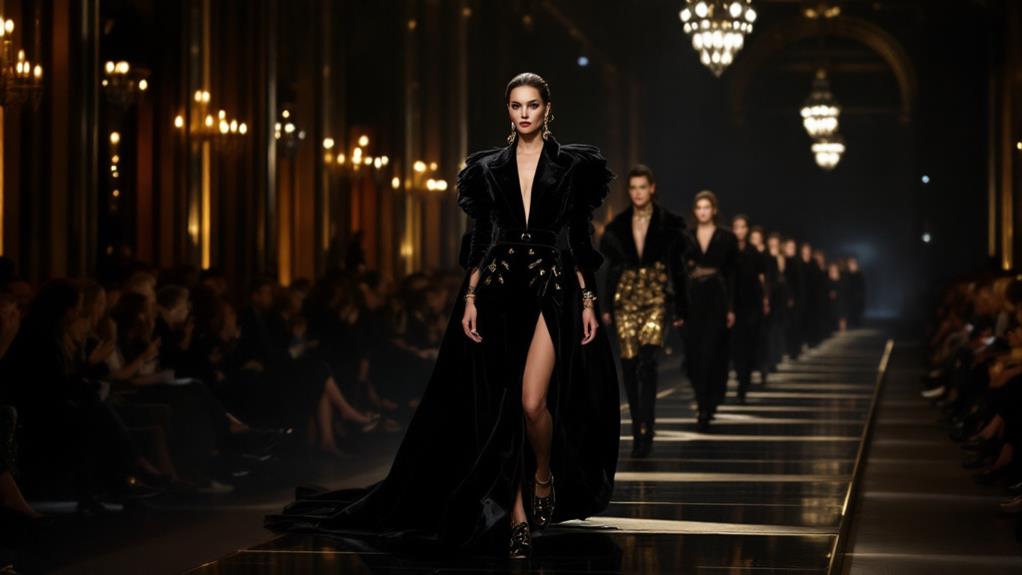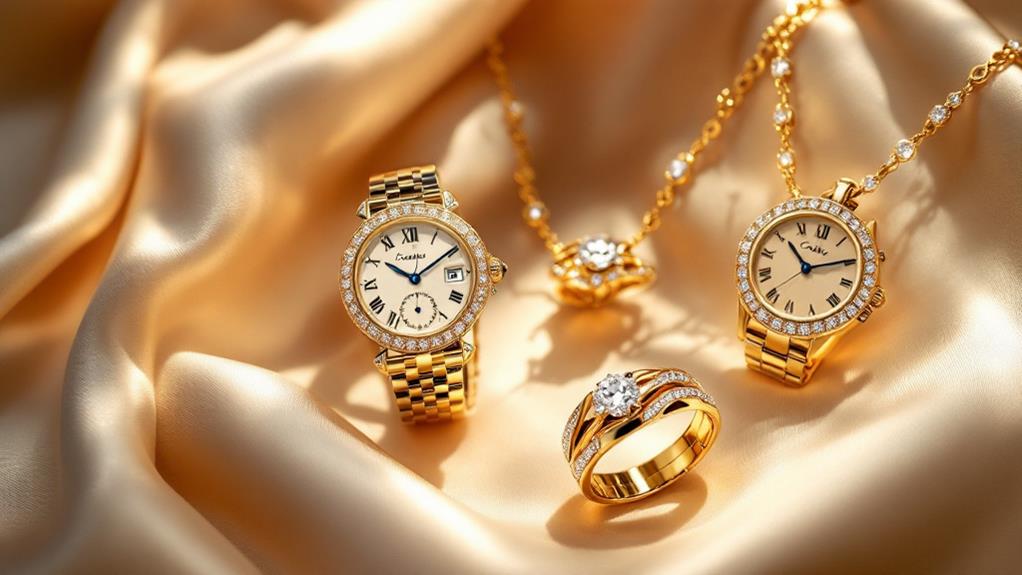The History of Balenciaga: The Legacy of a Fashion Icon
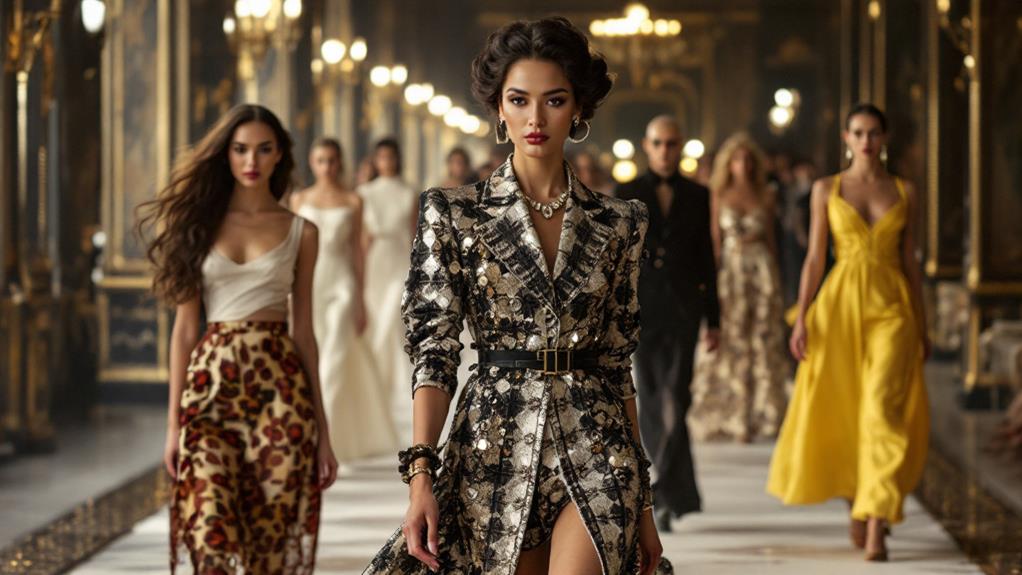
Balenciaga began in 1917, founded by Cristóbal Balenciaga in Spain. You'll find its expedition fascinating, as it moved to Paris in 1937, transforming haute couture with bold silhouettes like the sack dress and four-pointed envelope dress. Through periods of dormancy, the brand saw a revival in 1986 and again in 2001 with Kering's acquisition. Demna Gvasalia, since 2015, infused a streetwear vibe, appealing to the youth while honoring the brand's heritage. Collaborations, sustainability, and innovation keep Balenciaga at the fashion forefront. There's so much more on how Balenciaga continues shaping modern luxury.
Origins of Balenciaga
In the midst of a rapidly evolving fashion landscape, Balenciaga emerged in 1917, founded by the visionary Cristóbal Balenciaga in San Sebastián, Spain. You can't help but admire how quickly Balenciaga gained a reputation for its unique and artistic clothing designs. As a brand, it captivated a diverse European clientele, making waves with its groundbreaking craftsmanship and artistry in fashion. This early success wasn't just about style; it was about setting a new standard in couture.
When you explore Balenciaga's origins, you see a fashion house that wasn't afraid to break away from conventions. In 1937, Cristóbal made a bold move by relocating to Paris, the epicenter of fashion. Here, he presented his initial collection to the enthusiastic press, a crucial moment that cemented Balenciaga's place on the global stage. It was here that Balenciaga began to redefine haute couture, introducing silhouettes that dared to move beyond the traditional hourglass shape.
Balenciaga's early identity was all about timeless elegance and impeccable craftsmanship. You can trace the brand's lasting legacy back to these origins, where Cristóbal Balenciaga's vision laid a foundation that continues to influence fashion today.
Cristóbal Balenciaga's Innovations
Through his groundbreaking designs, Cristóbal Balenciaga transformed the fashion industry. He wasn't just creating clothes; he was redefining how you perceive high fashion. In 1952, Balenciaga introduced the iconic boxy suits, which completely reshaped women's fashion silhouettes. These cutting-edge designs emphasized a modern aesthetic, steering away from the constraining styles of the past.
In 1953, he further changed fashion by dropping waistlines to the hip level. This wasn't just a change in design; it was a new expression of femininity and comfort, allowing women to move with ease and style. His parachute dress became a staple, showcasing his groundbreaking use of fabric and setting a standard for contemporary fashion.
Balenciaga's 1957 sack dress was another bold statement. It challenged the prevalent hourglass silhouette, offering a radical departure and pushing boundaries in women's fashion design. This shift highlighted his ability to foresee trends and dictate the future of the fashion industry.
In recognition of his immense contributions, he was awarded the Knight of the Legion of Honour in 1958. Balenciaga's legacy lives on, inspiring designers and fashion enthusiasts alike with his visionary approach to high fashion.
Parisian Influence and Expansion
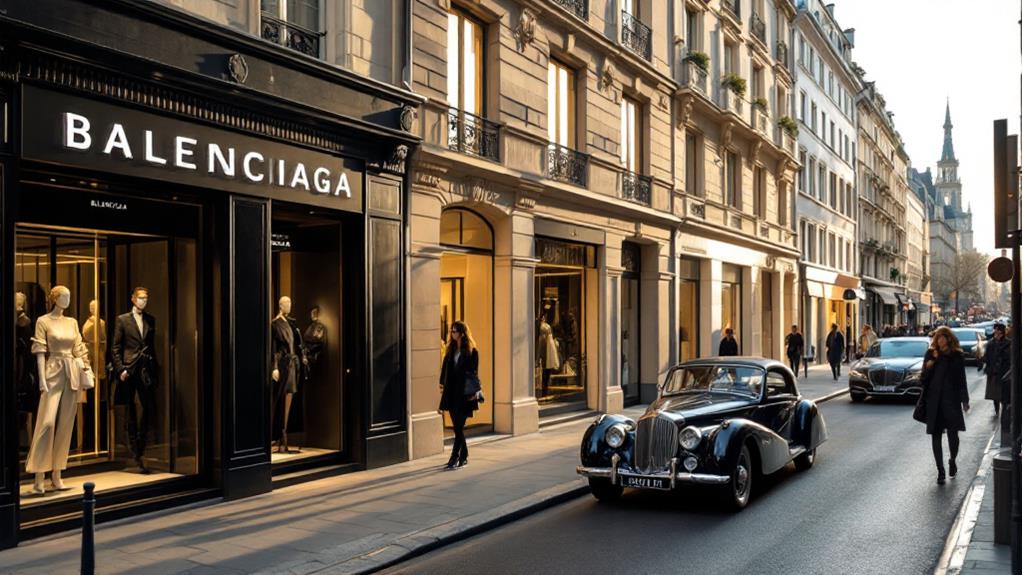
When Cristóbal Balenciaga opened his Paris fashion house in 1937, it marked a turning point not just for him, but for the entire fashion industry. Establishing his presence in the global fashion capital allowed Balenciaga to showcase his initial collection to the press, which was met with immediate acclaim. The groundbreaking designs and unique silhouettes presented set him apart, demonstrating a bold step into the world of haute couture. His Parisian fashion house became a guiding light of exceptional craftsmanship, a quality that distinguished his work from other contemporary designers in the city.
Relocating to Paris wasn't just about geography; it was about positioning the brand amongst the most influential figures across Europe. This strategic move attracted a diverse clientele, further solidifying Balenciaga's status in the haute couture scene. His collections were celebrated for their artistry, ensuring that each piece was not just clothing but a masterpiece. The expansion in Paris wasn't merely about growing a business; it was about establishing a legacy. Balenciaga's influence on fashion in the mid-20th century was profound, shaping the path for future designers and leaving an indelible mark on the evolution of fashion.
Signature Designs and Techniques
Balenciaga's move to Paris not only amplified his influence but also gave rise to his signature designs and techniques that redefined fashion. His groundbreaking silhouettes, like the iconic sack dress introduced in 1957, broke free from the constraints of the traditional hourglass figure, offering a fresh abstraction of the female form. As you examine his creations, you'll notice how Balenciaga began his design process with the fabric itself. This material-driven method allowed him to craft garments organically, rather than relying on preliminary sketches.
In the world of couture houses, Balenciaga stood out with his mastery over every stage of garment creation, from pattern drafting to careful finishing. His craftsmanship set a new standard, establishing him as a true couturier. Iconic pieces like the four-pointed envelope dress and the baby doll dress showcased his ability to sculpt fabric into forms that distorted and redefined the body's natural outline. His unique design language often drew inspiration from his Spanish heritage, evident in the flamenco dresses and intricate lacework he incorporated into his collections. These elements further enriched his signature designs, making Balenciaga an enduring icon in women's fashion.
Dormancy and Brand Revival
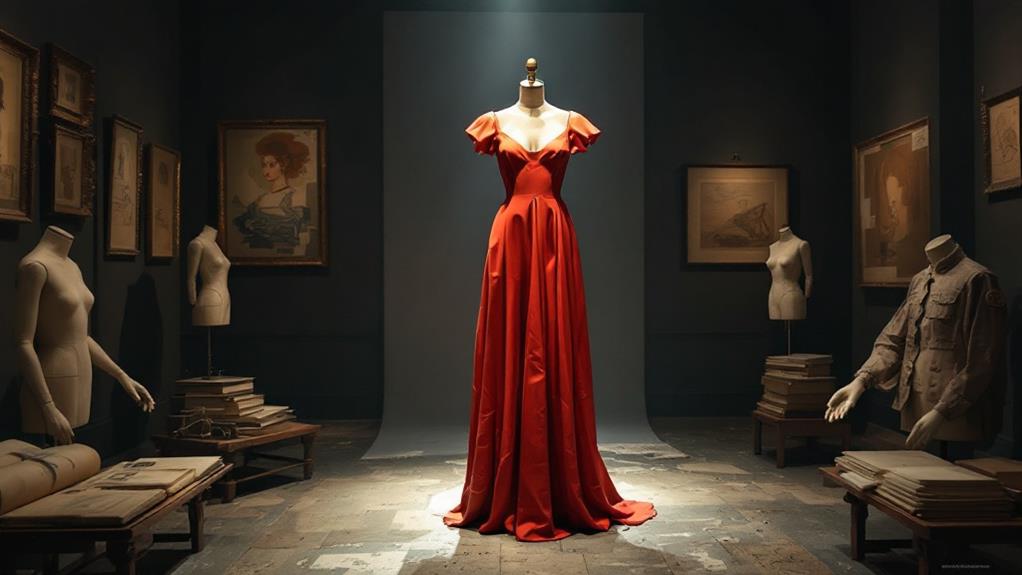
After Cristóbal Balenciaga closed the doors of his esteemed fashion house in 1968, the brand lingered in dormancy, leaving the fashion world to wonder what might come next. With Cristóbal's passing in 1972, Balenciaga remained a sleeping giant for nearly two decades. It wasn't until 1986, when Jacques Bogart S.A. acquired the brand rights, that the stage was set for a brand revival.
The revival began in earnest with the launch of the ready-to-wear line Le Dix in 1947, which aimed to re-establish the brand's presence in the luxury fashion industry. This move was essential in reintroducing Balenciaga to a new generation, paving the way for future growth. A transformative moment came in 2001 when Kering acquired Balenciaga, injecting new creative energy and strategic direction into the brand.
Nicolas Ghesquiére played a significant role in the brand's revival, drawing inspiration from Cristóbal's iconic designs and infusing them with a modern aesthetic. His groundbreaking approach attracted fashion enthusiasts and re-established Balenciaga as a leader in luxury fashion. This period of revitalization set the stage for future expansions and transformations, securing Balenciaga's place in contemporary fashion.
Impact of Demna Gvasalia
As Balenciaga's expedition of revitalization progressed, the arrival of Demna Gvasalia in 2015 marked a vital evolution for the brand. Unlike previous creative directors, Demna brought a groundbreaking approach to fashion by blending high fashion with streetwear aesthetics. His vision transformed Balenciaga, making it a powerhouse in the contemporary fashion scene. You noticed how his introduction of oversized silhouettes and practical designs resonated with a younger demographic, expanding the brand's appeal considerably.
Demna's impact became even more profound when he revived Balenciaga's Haute Couture line after a 53-year hiatus. This bold move showcased a perfect blend of heritage and creativity, earning critical acclaim and reinforcing Balenciaga's status as a leader in luxury fashion. His collaboration with celebrities like Kim Kardashian and Rihanna further amplified Balenciaga's presence in the luxury market, drawing a strong A-list following.
You can see how Demna's emphasis on craftsmanship and technological creativity has set a new direction for Balenciaga's future. By weaving modern interpretations into classic designs, he's guaranteed that Balenciaga's legacy continues to thrive. His influence is undeniable and has forever altered the fashion landscape, securing Balenciaga's place as an iconic brand.
Modern Collaborations and Trends
In recent years, Balenciaga has pushed the boundaries of fashion through cutting-edge collaborations and emerging trends. Under the visionary leadership of Demna Gvasalia, the brand has adopted modern collaborations that have redefined what luxury fashion can be. One groundbreaking partnership was with Crocs, where Balenciaga transformed the utilitarian clogs into avant-garde fashion statements. This collaboration highlighted the brand's ability to merge practicality with high-fashion appeal.
Another significant modern collaboration was with Gucci, resulting in limited-edition collections that stirred excitement across the fashion industry. These partnerships underscored Balenciaga's creative approach to cross-industry engagement, creating cultural moments that resonated with fashion enthusiasts worldwide.
While exploring these collaborations, Balenciaga hasn't overlooked sustainability. The brand has actively responded to the growing demand for environmentally conscious fashion by utilizing eco-friendly materials and working to reduce its carbon footprint. This commitment is evident in their modern collections, which appeal to a younger, eco-aware demographic.
Demna Gvasalia's influence is also reflected in the introduction of oversized silhouettes and streetwear aesthetics. This approach has attracted an A-list following, with celebrities like Kim Kardashian and Rihanna frequently showcasing Balenciaga's unique and bold designs.
Sustainability and Future Directions
While Balenciaga's reputation as a trendsetter is well-established, the brand's commitment to sustainability is likewise impressive. You can see this in their use of eco-friendly materials and efforts to reduce their carbon footprint. Balenciaga's response to growing environmental awareness is evident in its choice of cutting-edge materials and shapes crafted in collaboration with skilled artisans. This approach not only highlights sustainability but also enhances traditional craftsmanship within the fashion industry.
Balenciaga's limited-edition collections, like its partnership with Crocs, showcase the brand's ability to transform everyday items into high-fashion statements without compromising sustainable practices. This illustrates a forward-thinking approach, where fashion meets function, all while staying eco-conscious. Demna's collections particularly emphasize sustainability and technological advancement, ensuring that Balenciaga remains relevant and influential in contemporary fashion.
Moreover, Balenciaga's Haute Couture lines are gaining recognition for merging traditional techniques with modern sustainable practices. By doing so, the brand reflects a commitment to preserving the art of Haute Couture while adapting to the demands of a more environmentally conscious world. As you investigate Balenciaga's future directions, you'll find a brand dedicated to leading the way in sustainable fashion creativity.
Balenciaga's Lasting Legacy
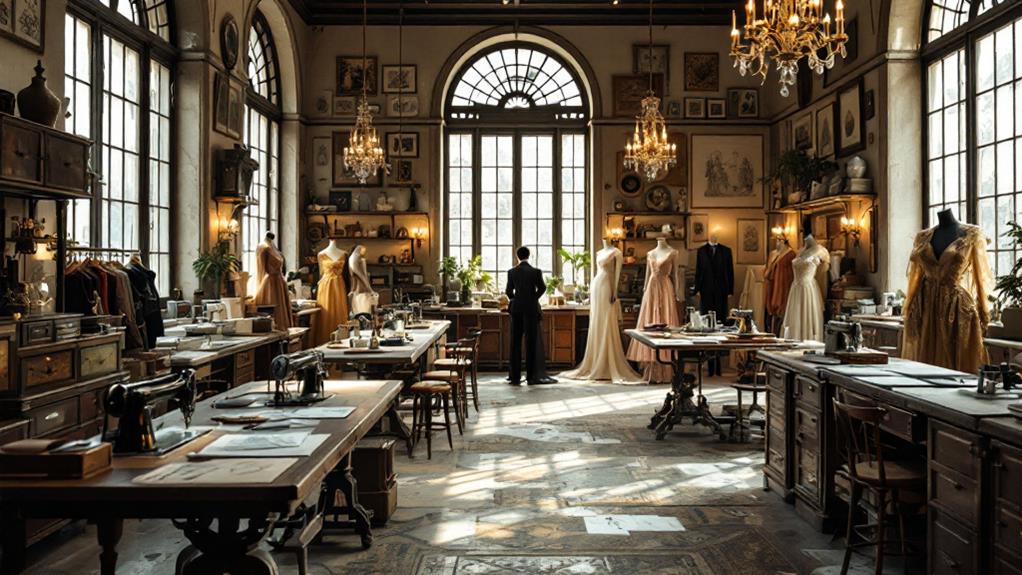
Balenciaga's lasting legacy in the fashion world is undeniable. As a fashion enthusiast, you've likely marveled at how Balenciaga's groundbreaking techniques in pattern cutting and material use have transformed women's fashion. These techniques continue to inspire contemporary designers, keeping the brand's influence alive and relevant. Balenciaga's commitment to haute couture excellence is a reflection of its enduring appeal among luxury fashion lovers.
The brand's re-launch in 1986 marked a significant moment, rejuvenating its heritage under the guidance of creative directors like Nicolas Ghesquière and Demna Gvasalia. Their vision has successfully merged Balenciaga's iconic history with modern aesthetics, ensuring its continued relevance in the current dynamic fashion landscape. This blend of tradition and advancement has kept the brand at the forefront of fashion.
Exhibitions and retrospectives celebrating Balenciaga's contributions, such as those at the V&A Museum, showcase the brand's extensive impact. These collections provide insight into how Balenciaga has shaped and continues to shape the fashion industry. Iconic designs like the Triple S sneaker and the City bag have become cultural phenomena, bridging the gap between high fashion and streetwear. Balenciaga's legacy, cherished by fashion enthusiasts, remains a powerful force in the world of haute couture.

